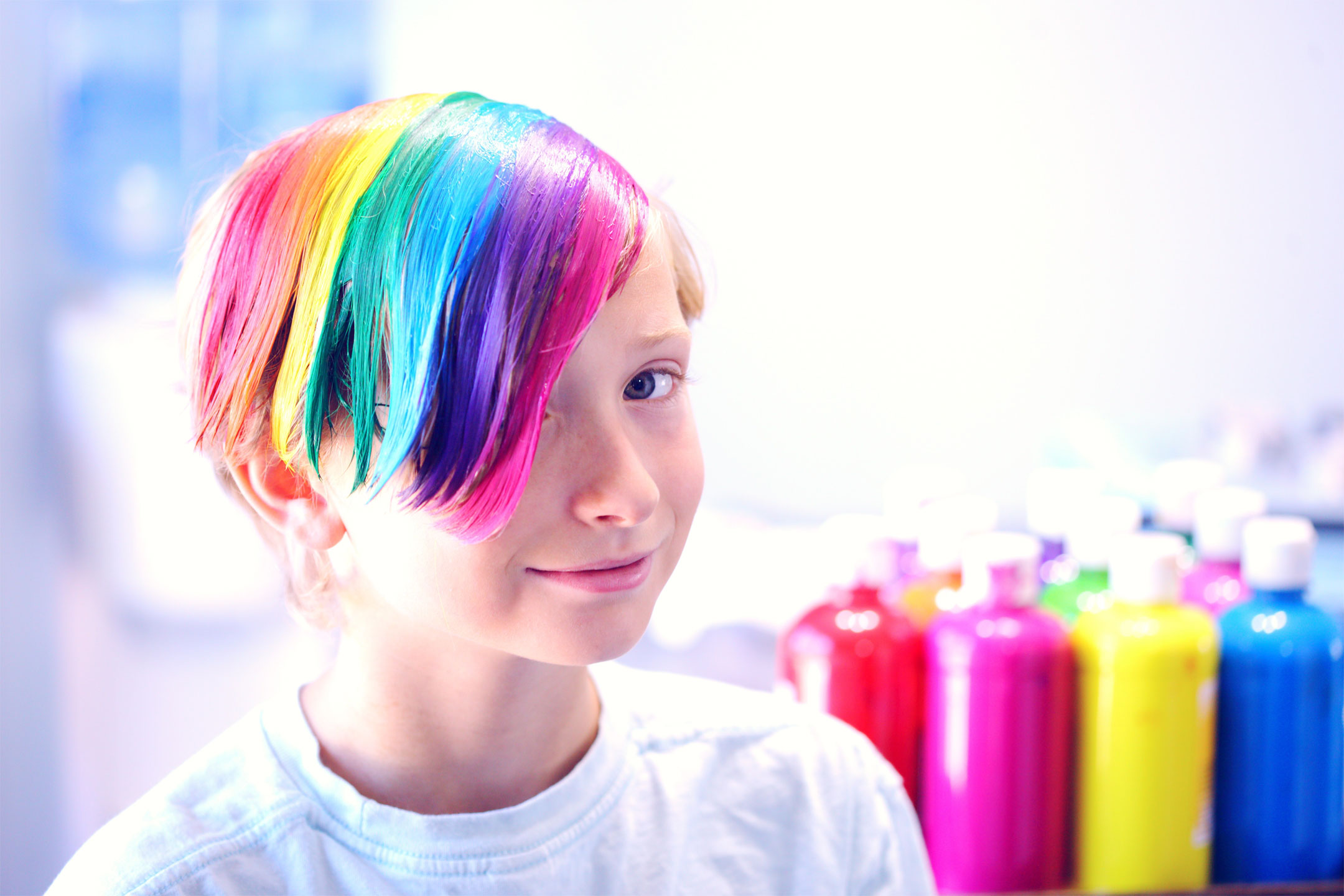
17 Apr A Matter of Identity-gender dysphoria in children
“We’re not talking about a male toddler who pops on a frock occasionally or a little girl who acts like a tomboy…We’re talking about children who continually, even under the duress of discrimination and abuse, behave in ways that are outside of society’s gender norms.”
By the time Josh Martin* was 18 months old, it became clear to his parents that he was not as ‘macho’ as some other boys his age. He showed a preference for soft colours, quiet play, girl dolls and tidiness. He was also more advanced than most of his male peers in language skills and dexterity. By the time he was two, Josh was refusing to wear boys’ clothes or shoes. He wanted his nails painted and would not have his hair cut. His parents, Jan a dentist and Andrew an academic, were, as they put it, “alert but not alarmed”.
“We had no expectations that our son would be a rough and tumble sort of kid. Josh has an older sister, Amy, and he adored her from when he was a baby. And his father is a very gentle man. I do admit it was a challenge when he wanted to wear dresses to preschool. We were very worried about him in terms of social life and pressure from other adults. That was why we went with him to a psychiatrist. Not to find out what was ‘wrong’ with him and ‘fix’ it but to help tailor our parenting strategies to his temperament. At that point, we thought it was a passing stage.”
Transgenderism is not about sexual orientation and sexual attraction.
The first psychiatrist the family saw believed that Josh was responding to parental relationship issues. “He was very Freudian,” says Jan. “According to him, it was all about some sort of resentment Josh had towards his father and an over-identification with me. He practically insisted that there was something dreadful in our relationship that made Josh this way. So we had relationship counselling, but in the end, we both agreed that the guy was looking for something that wasn’t there. We finally found someone who dealt with gender-identity issues. Over the years, as Josh’s behaviour has remained more feminine than masculine, we have accepted that he is transgender.”
The term transgenderism, or gender dysphoria, refers to people whose sense of maleness or femaleness does not match the gender of their sexual organs. With the rise of lesbian, gay and bisexual communities, there is increasing cultural acceptance that gender is a spectrum, with maleness at one end, femaleness at the other and a range of behaviour and sensibilities in between and beyond. However, transgenderism is not about sexual orientation and sexual attraction. It is, about the gender with whom a person identifies.
In the bad old days, not so long ago, it was believed that gender could be programmed into a child. Stringent social expectations of gender behaviour were imparted by families, peer groups, educational institutions and religious organisations. The consequences for acting outside the norms ranged from alienation and verbal or physical punishment, to shock therapy and institutionalisation. Extremely high suicide rates as well as drug and alcohol abuse amongst the transgender community point to a lack of success in attempts at conditioning.
Essentially, we know close to nothing about how a gender identity becomes established
In the famous so-called John/Joan case in the late sixties, doctors at Johns Hopkins Hospital in the USA decided to turn a baby boy into a girl after a badly botched circumcision. From the time of the operation through to adolescence, John/Joan, whose real name was David Reimer, was subjected to psychological and hormonal conditioning to secure his identity as a female. Born an identical twin, his brother became the ‘control’ in the experiment. While the twin grew up a boyish boy, John/Joan appeared to be a happy, healthy and ‘normal’ girl. Medical and psychiatric communities used the case to argue that conditioning can beat nature’s intentions, and sex reassignment became a stock standard treatment for babies who were born with genital problems.
It wasn’t until 1997 when it was discovered how desperately unhappy John/Joan had been all his life, and how painfully he had struggled with his compromised sexuality, his gender identity and the expectations of his family. In March 2004, David Reimer committed suicide.
The nature/nurture debate continues. To what extent is a child born with gender dysphoria and to what extent is gender identity affected by upbringing? Essentially, we know close to nothing about how a gender identity becomes established. In the last couple of decades, autopsy-based research has indicated a possible prenatal cause for gender dysphoria. Medical authorities note that hormone ‘washes’ act on the body of the foetus and the brain, but there is discussion over whether and how this ‘hardwires’ the brain for gender identity. There is also discussion on the chromosomal variations that influence the process of determining sexual identity. At the very least, it is now accepted that gender dysphoria is probably the result of a complex interchange of biological and environmental factors.
Professor Louis Gooren, who runs the largest gender dysphoria clinic in the world in Holland, sees children as young as five years of age. “Some children start out not to behave ever as a person of the biological sex they seem to belong to, and they always behave like people of the other sex. They become extremely squeamish when they are put in a category of the biological sex. Parents see that, and mostly the parents are the biggest supporters of these interventions. They say, ‘It’s hopeless, we cannot fit our child into the category of sex you would think the child belongs to’.”
General manager of The Gender Centre, Elizabeth Riley, saw families with pre-adolescent and teenage kids. “That’s when the children themselves are beginning to identify why they have felt so different all their lives,” she says. “If you talk to transgender people, almost without exception they will tell you that they knew with certainty they had a gender-identity issue from the age of around nine or 10. When it becomes clear that this behaviour is not going away, parents come to us to help sort through the prejudices and work out strategies to protect their children at school and to manage issues with peers.”
For Josh Martin, acceptance from his parents has softened the blows he suffers by being a ‘girly’ boy. “Obviously gender can be influenced by upbringing,” says his mother Jan, “but I don’t believe it can be completely erased. We’re not talking about a male toddler who pops on a frock occasionally or a little girl who acts like a tomboy. Nor is this about teenage dabbling into varied sexuality. We’re talking about children who continually, even under the duress of discrimination and abuse, behave in ways that are outside of society’s gender norms.
“Josh is now 17. He wears boys’ and girls’ clothing. He isn’t gay. He says he is attracted to girls, though he hasn’t had a girlfriend because girls don’t find effeminate men attractive. We worry for him in terms of relationships, but we feel really good that from the beginning we were steady in our love and support for him. He is a secure, intelligent and very funny young man. He just likes to get around in a dress.”
*Real names have not been used.
Emeritus professor in transgender medicine Louis J. G. Gooren is a Dutch endocrinologist known for his work with transsexual and transgender people. He has treated over 2,200 transsexual people and was one of the first physicians to treat transgender youth.
Words: Klay Lamprell
See also ‘You Can’t Ask That’ on ABC iView (where a group of intersex Australians have appeared on the ABC’s You Can’t Ask That program to answer questions from the public about their lives and what it means to have an intersex variation.)
Key Terms
While these definitions are the most commonly accepted in the transgender community, some are subject to ongoing debate and discussion.
Sex: the biological status of male or female.
Gender: the social construction of one’s sex. In our society one’s sex is expected to correspond to one’s gender, that is, if you are female you are supposed to have a feminine gender.
Gender Identity: a person’s internal sense of being female, male or both or neither. This is communicated to others by one’s gender expression – clothes, hairstyle, mannerisms etc. Society prescribes arbitrary rules or gender roles (how one is expected to and not expected to dress act, think, feel, relate to others etc.) based on one’s biological sex.
Transgender: an umbrella term for those whose gender identity or behaviour falls outside of stereotypical gender norms. Transgender people are those who do not identify with the gender assigned to them at birth. This includes those who identify with the opposite gender to their biological sex, that is, someone who is born anatomically ‘female’ but feels this is at odds with their inner sense of being male. There are other transgender people who do not identify with either sex/gender or may feel bi-gendered, challenging the notion that there are only two mutually exclusive genders.
Transsexual: those individuals who are born anatomically male or female but have profound identification with the gender opposite to that assigned to them at birth. Many, though not all, opt for surgery and hormone treatment to correspond to their internal concept of self.
Transphobia: refers to the fear and hatred of transpeople that take place in the form of harassment, violence and abuse towards those who are or are perceived to be transgender.
Affirming Gender/Transition: the process of adopting a lifestyle and/or body that matches a person’s sense of their gender. The process may take some time, involve a number of different but related processes and may or may not
involve surgery
Intersex: a biological condition where a person is born with reproductive organs and/or sex chromosomes that are not exclusively male or female. The previous term for intersex was hermaphrodite.
Reprinted with permission from Family Planning Victoria and www.safeschools.org.au/transgender.cfm
Resources:
The Gender Centre Counselling and support services for people with gender issues and their families:
AISSupportGroup Australia Inc. Support services for people with Androgen Insensitivity Syndrome issues, including gender identity and surgical intervention of children with intersex conditions:
Children’s National Medical Center (US)
The Australian Good Tranny Guide A website listing support groups, businesses and giving medical and legal information:
Ma Vie en Rose (My Life in Pink) Director: Alain Berliner, Sony Pictures, 1997




